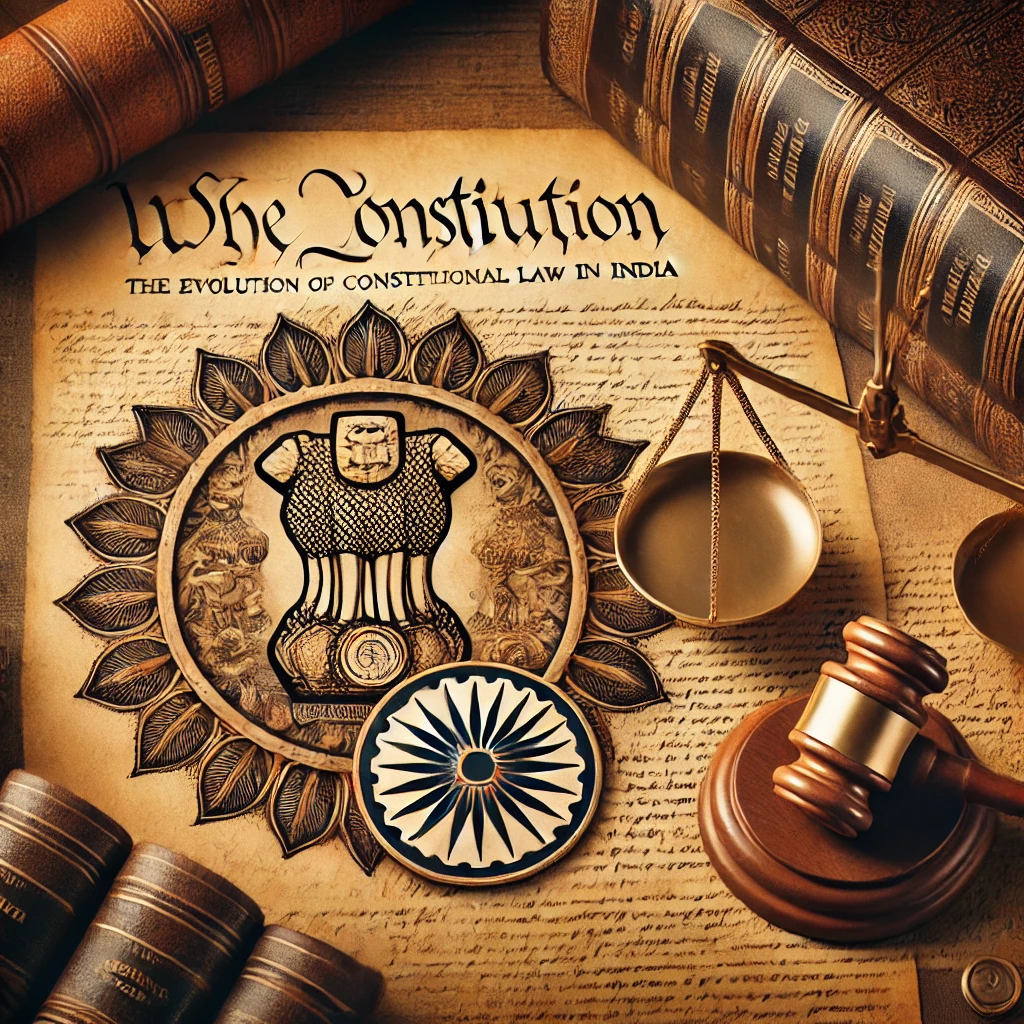The Evolution of Constitutional Law in India
The Evolution of Constitutional Law in India
India, with its rich tapestry of history and culture, has always been a land of complex legal traditions. The Constitution of India, which came into force on January 26, 1950, stands as a monumental document that laid the foundation for the country’s legal framework. However, the journey towards the creation of this robust Constitution was neither simple nor straightforward. It is the result of centuries of legal evolution, shaped by indigenous practices, colonial influences, and the aspirations of a newly independent nation.
Ancient and Medieval Legal Traditions
Before delving into the Constitution’s development, it is essential to understand India’s ancient and medieval legal systems. Ancient India was governed by a mix of customary laws, religious scriptures, and royal edicts. The Manusmriti, an ancient legal text, provided guidelines for governance, justice, and social conduct. Although criticized for its rigid social hierarchy, Manusmriti played a significant role in shaping early Indian law.
During the medieval period, with the advent of Muslim rule, Islamic law or Sharia began influencing the legal system, particularly in matters of personal law. The Mughal Empire, which ruled most of India from the 16th to the 18th century, had a well-structured legal system based on the principles of justice and equity. The Mughal rulers were known for their administrative acumen, and their legal system was a blend of Islamic and indigenous laws.
The British Colonial Influence
The most significant transformation in India’s legal system began with the advent of British colonial rule. The East India Company, which initially came to trade, eventually became the ruler of vast territories in India. The British brought with them their legal system, which was based on common law principles. The Charter Acts and Regulations, enacted by the British Parliament, laid the foundation for modern Indian law.
One of the landmark developments during British rule was the codification of laws. The Indian Penal Code (IPC), drafted by Lord Macaulay and enacted in 1860, remains one of the most comprehensive criminal codes in the world. The Indian Evidence Act (1872) and the Code of Civil Procedure (1908) are other significant contributions of British rule to the Indian legal system.
However, the British legal system was not without its flaws. It was often seen as an instrument of colonial domination, and many laws were designed to suppress dissent and maintain control over the Indian population. Despite this, the introduction of concepts like the rule of law, judicial independence, and due process had a lasting impact on India’s legal evolution.
The Struggle for Independence and the Demand for a Constitution
The late 19th and early 20th centuries were marked by growing nationalist sentiments and the demand for self-governance. Indian leaders, inspired by democratic ideals, began advocating for a constitution that would reflect the aspirations of the Indian people. The demand for constitutional reforms was a central theme of the Indian National Congress, the leading political organization of the time.
The Government of India Act of 1935 was a significant milestone in the constitutional history of India. Although it fell short of granting full self-governance, it introduced the concept of provincial autonomy and laid the groundwork for the federal structure that would later be adopted in the Indian Constitution.
The Constituent Assembly and the Drafting of the Constitution
With India’s independence on August 15, 1947, the task of drafting a constitution for the newly independent nation was entrusted to the Constituent Assembly. The Assembly, comprising eminent leaders, legal experts, and representatives from various communities, was tasked with framing a constitution that would guide the country toward democracy and social justice.
Dr. B.R. Ambedkar, the chairman of the Drafting Committee, played a pivotal role in shaping the Indian Constitution. Drawing inspiration from various sources, including the British parliamentary system, the American Bill of Rights, and the French Declaration of the Rights of Man and of the Citizen, the Indian Constitution became a unique blend of various legal traditions.
After nearly three years of deliberations, the Constitution of India was adopted on November 26, 1949, and came into force on January 26, 1950. The Constitution established India as a sovereign, socialist, secular, and democratic republic, with a federal structure and a parliamentary system of government.
Key Features of the Indian Constitution
The Indian Constitution is the longest written constitution in the world, comprising 395 articles, 12 schedules, and numerous amendments. Some of its key features include:
- Fundamental Rights: The Constitution guarantees certain fundamental rights to all citizens, including the right to equality, freedom of speech, and protection against discrimination. These rights form the cornerstone of Indian democracy and are enforceable by the courts.
- Directive Principles of State Policy: Inspired by the Irish Constitution, these principles provide guidelines for the government to promote social and economic welfare. Although not enforceable in a court of law, they are fundamental to governance and aim to create a just society.
- Federal Structure: India is a federal state with a clear division of powers between the central government and the states. The Constitution outlines the legislative, executive, and judicial powers of both levels of government.
- Independent Judiciary: The judiciary in India is independent of the executive and legislative branches. The Supreme Court of India is the apex court, with the power of judicial review to ensure that laws and executive actions conform to the Constitution.
- Amendment Process: The Constitution provides a detailed procedure for its amendment, allowing it to evolve with changing times. However, certain provisions, such as the basic structure of the Constitution, are considered sacrosanct and cannot be altered.
Post-Independence Developments and Amendments
Since its adoption, the Indian Constitution has undergone more than 100 amendments, reflecting the dynamic nature of Indian society and polity. Some of the significant amendments include:
- The First Amendment (1951): Introduced to address land reform and other socio-economic measures, it also placed reasonable restrictions on the right to free speech.
- The 42nd Amendment (1976): Often referred to as the “Mini-Constitution,” this amendment brought about substantial changes, including the addition of the words “socialist” and “secular” to the Preamble, and curtailing the power of judicial review.
- The 73rd and 74th Amendments (1992): These amendments established a framework for local self-governance through Panchayati Raj institutions and urban local bodies, respectively.
- The Right to Education Act (2009): The 86th Amendment made education a fundamental right for children aged 6 to 14 years, reflecting the government’s commitment to universal education.
Challenges and the Future of Constitutional Law in India
While the Indian Constitution has successfully guided the country through various challenges, including political crises, economic reforms, and social movements, it continues to face new challenges. Issues such as the balance of power between the center and states, the role of the judiciary, and the protection of individual rights in the digital age require continuous legal and constitutional innovation.
Moreover, the interpretation of the Constitution by the judiciary, particularly in landmark cases like Kesavananda Bharati v. State of Kerala (1973), has significantly shaped the understanding of the Constitution’s basic structure doctrine. This doctrine ensures that the core principles of the Constitution, such as democracy, secularism, and federalism, cannot be altered by any amendment.
Conclusion
The evolution of constitutional law in India is a testament to the resilience and adaptability of the country’s legal system. From ancient times to the present day, India’s legal landscape has been shaped by a myriad of influences, both indigenous and foreign. The Indian Constitution, as a living document, continues to evolve, reflecting the aspirations and challenges of a diverse and dynamic nation.
As India moves forward, the Constitution will remain the bedrock of its legal system, guiding the nation toward greater social justice, equity, and democracy. The evolution of constitutional law in India is not just a historical journey but an ongoing process that will shape the future of the nation for generations to come.










